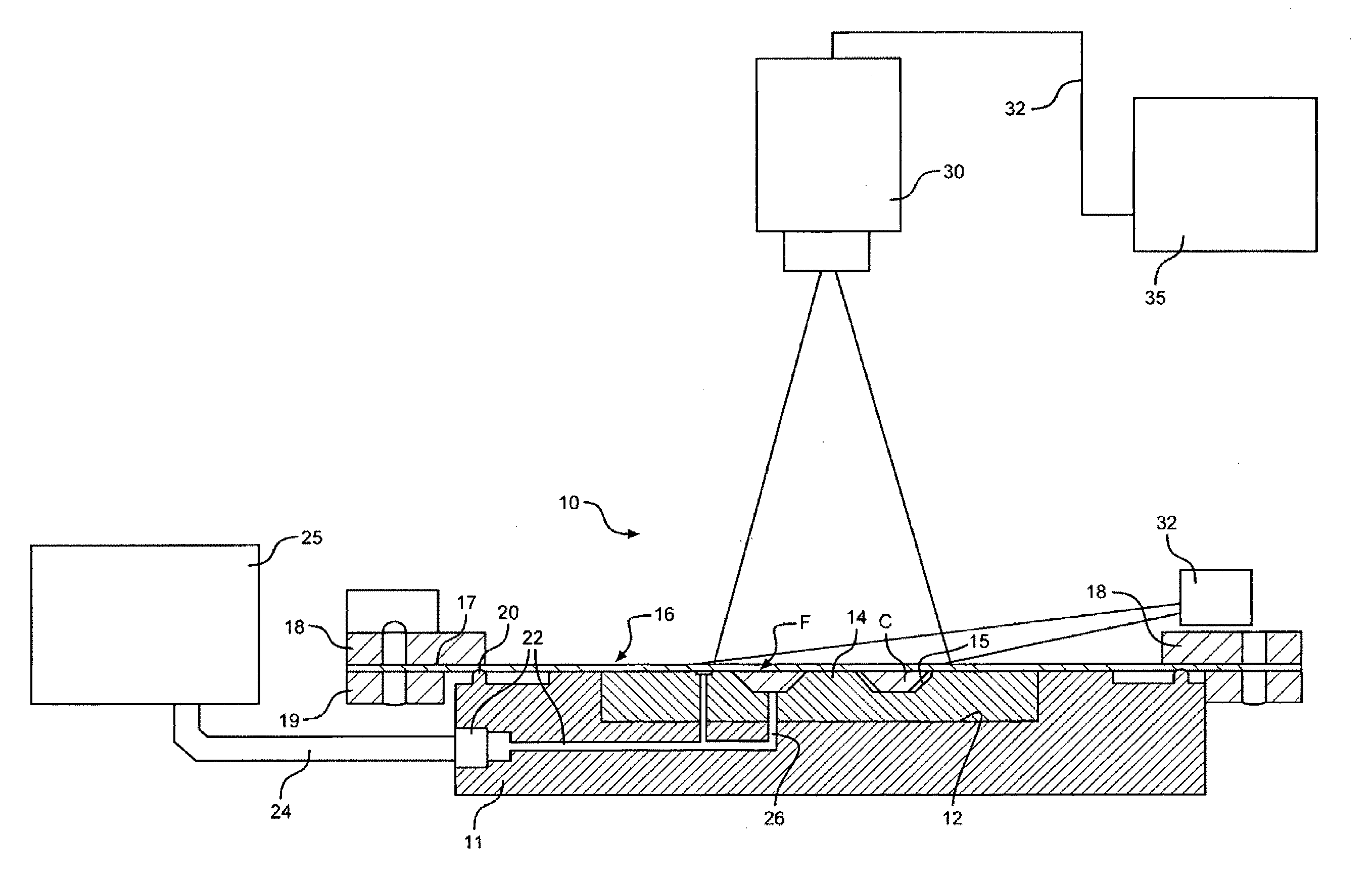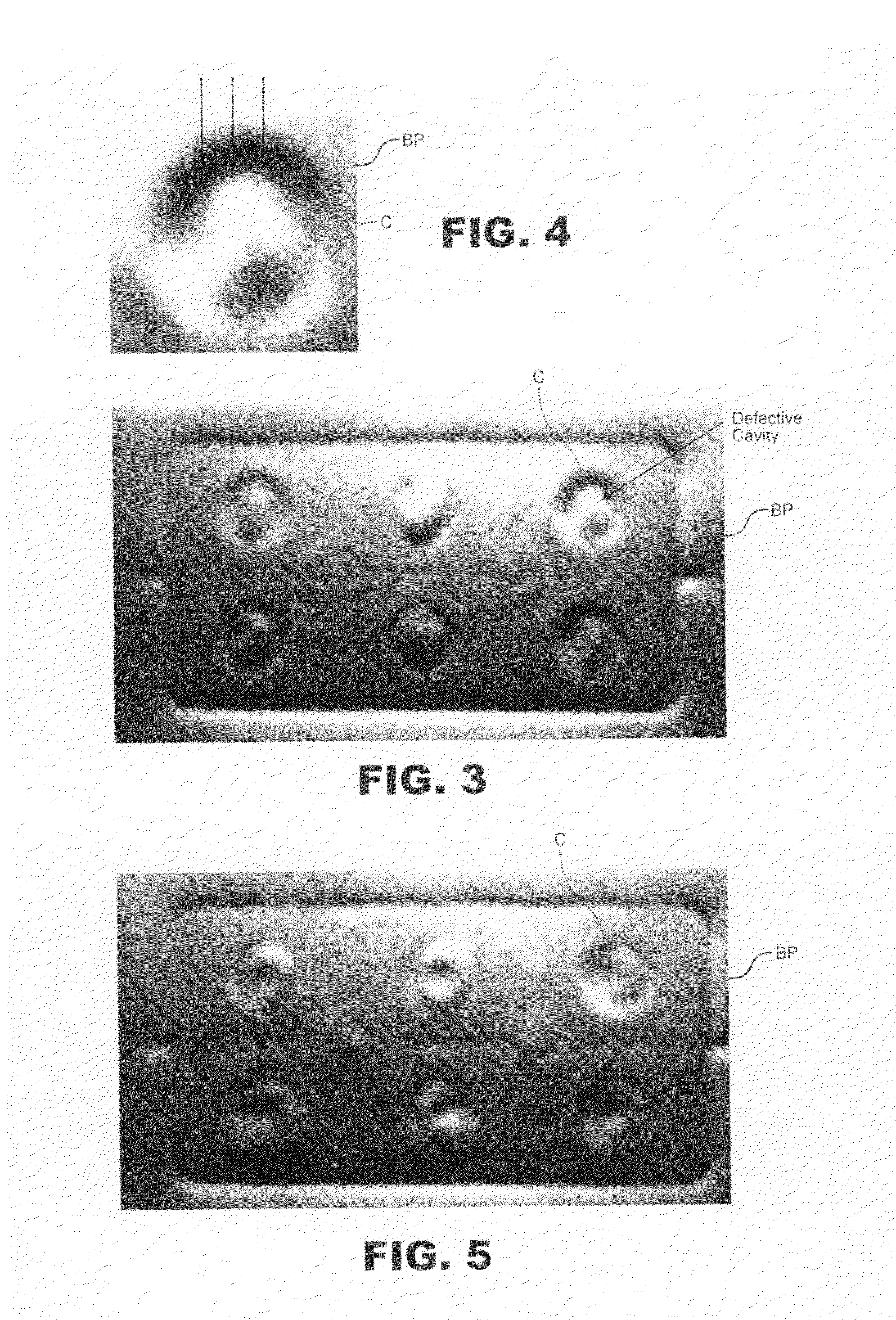Method and apparatus for detecting leaks in blister packs using vacuum and vision testing
a technology of vacuum and vision testing and leakage detection, applied in the direction of measurement devices, structural/machine measurement, instruments, etc., can solve the problems of insufficient sensitiveness, insufficient reliability, and destructiveness of most current test methods for blister packages, and achieve the effect of improving accuracy
- Summary
- Abstract
- Description
- Claims
- Application Information
AI Technical Summary
Benefits of technology
Problems solved by technology
Method used
Image
Examples
Embodiment Construction
[0021]The need for non-destructive reliable leak detection for small semi-rigid, flexible, and blister packages with multiple pouches has lead to the creation of the present method and apparatus. To detect all defects of a small package of this kind, an apparatus must be capable of detecting small defects as well as large defects. To reliably detect all defects of a small package, two methods of detection are used together to maximize the probability of accurate detection.
[0022]With continued reference to the drawings, small defects can be successfully detected using vacuum testing, measuring the absolute and differential pressure. To accomplish this, the testing apparatus 10 of the invention utilizes a rigid support tooling 11 having at least one enlarged cavity 12 therein in which one of a plurality of package specific inserts 14 are selectively received. Each insert 14 will having different configurations of small testing chambers 15 therein. In the embodiment shown, there are si...
PUM
 Login to View More
Login to View More Abstract
Description
Claims
Application Information
 Login to View More
Login to View More - R&D
- Intellectual Property
- Life Sciences
- Materials
- Tech Scout
- Unparalleled Data Quality
- Higher Quality Content
- 60% Fewer Hallucinations
Browse by: Latest US Patents, China's latest patents, Technical Efficacy Thesaurus, Application Domain, Technology Topic, Popular Technical Reports.
© 2025 PatSnap. All rights reserved.Legal|Privacy policy|Modern Slavery Act Transparency Statement|Sitemap|About US| Contact US: help@patsnap.com



